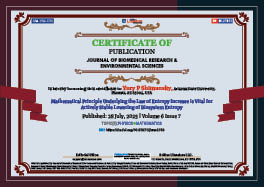Jessie Evans*
Volume6-Issue7
Dates: Received: 2025-07-10 | Accepted: 2025-07-27 | Published: 2025-07-28
Pages: 984-985
Abstract
FullText HTML
FullText PDF
DOI: 10.37871/jbres2153
Certificate of Publication

Copyright
© 2025 Shimansky YP, Distributed under Creative Commons CC-BY 4.0
How to cite this article
Evans J, Bridging Physics and Mathematics: Why Their Synergy Shapes the Future of Science. J Biomed Res Environ Sci. 2025 Jul 28; 6(7): 984-985. doi: 10.37871/jbres2153, Article ID: JBRES2153, Available at: https://www.jelsciences. com/articles/jbres2153.pdf